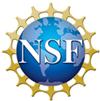
(You can also visit http://www.gaming2learn.org/. )
National Science Foundation Project #0821965
Center for STEM Research at Hofstra University
Simulation and Modeling in Technology Education (SMTE) is a five-year project that develops and researches the academic potential of a hybrid instructional model that infuses computer simulations, modeling, and educational gaming into middle school technology education programs. These prototypical materials use 3D simulations and educational gaming to support students learning STEM content and skills through developing solutions to design challenges. The virtual environment allows students to analyze and improve their designs by changing variables and observing how their changes affect design performance. Once the designs are optimized on-screen, students will construct physical models and compare their functionality and effectiveness to the simulated virtual models. A uniqueness of the project is the development of an enterprise architecture that enables instructors to modify the context of the design problems to fit different instructional and geographic settings. The research investigates the transferability of the model and its potential to improve STEM teaching and learning.
Dr. Michael Hacker
Project Director and
Principal Investigator
Center for STEM Research
Email | Vitae | Bio
Dr. David Burghardt
Co-Principal Investigator
Center for STEM Research
Email
Lois Miceli
Project Administrator
Center for STEM Research
Hofstra University
Center for STEM Research
773 Fulton Avenue
Hempstead, NY 11549-7730
516-463-6482
Email
The project incorporates a virtual engineering design approach that integrates science and mathematics and uses contemporary technological tools and pedagogical strategies. The content is driven by the concepts and skills identified in the K-12 Standards for Technological Literacy (STL). The partners are Hofstra University’s Center for Technological Literacy, the State University of New York at Buffalo, the NSF National Center for Telecommunications Technologies, Bloomsburg University in Pennsylvania, and the City University of New York.
The research design includes a test of two conditions:
Condition 1: Teachers and students implement the Survival Master computer game (approximately four weeks) and then construct a physical model (approximately one week); or,
Condition 2: Teachers and students implement the physical curriculum (approximately four weeks) and then engage in the game-based multiplayer design challenge (approximately one week).
Testing will involve 12 teachers and 240 students with data collected in six assessment domains. Data will be analyzed using a variety of multivariate statistical analysis.
Project Abstract
SMTE Project Overview (You can also visit http://www.gaming2learn.org/. )
National Science Foundation Project #0821965
Center for Technological Literacy at Hofstra University
Simulation and Modeling in Technology Education (SMTE) is a five-year project that develops and researches the academic potential of a hybrid instructional model that infuses computer simulations, modeling, and educational gaming into middle school technology education programs. These prototypical materials use 3D simulations and educational gaming to support students learning STEM content and skills through developing solutions to design challenges. The virtual environment allows students to analyze and improve their designs by changing variables and observing how their changes affect design performance. Once the designs are optimized on-screen, students will construct physical models and compare their functionality and effectiveness to the simulated virtual models. A uniqueness of the project is the development of an enterprise architecture that enables instructors to modify the context of the design problems to fit different instructional and geographic settings. The research investigates the transferability of the model and its potential to improve STEM teaching and learning.
The project incorporates a virtual engineering design approach that integrates science and mathematics and uses contemporary technological tools and pedagogical strategies. The content is driven by the concepts and skills identified in the K-12 Standards for Technological Literacy (STL). The partners are Hofstra University’s Center for Technological Literacy, the State University of New York at Buffalo, the NSF National Center for Telecommunications Technologies, Bloomsburg University in Pennsylvania, and the City University of New York.
The research design included a test of two conditions:
Group 1 completed the physical modeling activities (KSB and the physical modeling design challenge) and subsequently engaged in the virtual "team-based design activity."
Group 2 completed the virtual modeling activities (KSB and the virtual "team-based design challenge.")
Project Mission and Goals
The mission of SMTE is to develop and research a high-quality innovative program model addressing the DR-K12 Frontier Challenges: 1) to give all students the opportunity to learn significant STEM content; 2) to support STEM teachers’ practice and development in an era of cyber-enabled learning; and 3) to enhance STEM learning through effective integration with local and global resources and systems.
To address these challenges, the Project will:
Produce a generalizable methodology and infrastructure that can engender the development of a transformative genre of hybrid STEM curriculum involving 3D simulation, gaming, and real-world physical modeling.
Conduct research into 1) learning acquired through simulation, gaming, and follow-up physical modeling; 2) attitudinal changes, facilitated by an educational gaming environment, toward learning about technology and design; and 3) the adaptability of the Project hybrid model.
Develop a six-week prototypical program that promotes technological literacy through design-based activities and quests in realistic contexts, addresses middle school STEM standards, and includes embedded formative and summative assessments of student understanding.
Evaluate, publish, and disseminate models, methods, products, materials, and results.
Expertise of Project Personnel
A project of the complexity of SMTE demands expert and coordinated leadership. The Project brings together highly regarded leaders with proven materials development and project management success; exceptional research, evaluation, and technical expertise; and a history of collaboration. Longstanding professional relationships among the co-Project leaders (co-PL) add value to this endeavor by providing for quicker start-up time, lower start-up costs, and philosophical harmony.
Jim Kiggens, the associate director for digital technology at the Hofstra Center for Technological Literacy (CTL), is serving as the SMTE game producer. He is the former director of the Serious Game Design Institute (SGDI) at Santa Barbara City College and the CEO of Course Games, a gaming company focused on the design and development of games for education.
Drs. Michael Hacker (PL/PC) and David Burghardt (co-PL) are co-directors of the Hofstra CTL. They have jointly managed seven large-scale NSF projects. Dr. Hacker is responsible for the overall coordination of the Project and the design of the physical modeling curriculum. In his 47 years in education, Dr. Hacker was a middle school teacher and chair, a university educator and administrator, and a NYSED technology education state supervisor. Dr. Burghardt is professor of engineering and teaches in the schools of Education and Engineering at Hofstra, and is providing technical support, particularly in areas of heat flow and engineering design. Drs. Burghardt and Hacker are authors of several middle school technology education textbook programs and are experienced NSF materials developers.
Drs. Bert Flugman and Deborah Hecht (co-PL) are directors of the Center for Advanced Study in Education at the CUNY Graduate Center. For decades, they have served as researchers and evaluators on large-scale NSF and USDOE projects. They, along with postdoctoral associates and graduate students, lead the Project’s research and evaluation activities.
Dr. Karl Kapp (co-PL) directs the Institute for Interactive Technologies at Bloomsburg University. He is the author of Gadgets, Games, and Gizmos for Learning: Tools and Techniques for Transferring Know-How from Boomers to Gamers. He coordinates the development of game play protocols and instructional design.
Tom Robertson is president and CEO of White Box Learning in Chapel Hill, NC. He has 15 years of experience in developing state-of-the-art engineering software and received prestigious awards from General Motors and Airbus Industries for outstanding technology innovations. He is dedicated to the goal of improving education and is innovative in his approach to finding solutions. He is serving as the Project engineering design expert and is ensuring the technical correctness of the simulations.
Gordon Snyder (co-PL) is the executive director of NCTT, the author of four IT textbook programs, and an expert in communications and network design. He will facilitate the use of new communication technologies in overseeing dissemination through the NSF ATE Center network.
Cecilia Mason, Art Director, Course Games Art Director, Character Art Lead, Moodle Developer
Ty Hegner, Environment Artist, Course Games Environment Art Lead, Audio Producer
Kyle Bean, QA Director, Course Games QA Director, Cinematics Lead, Moodle Developer
Methodological Overview
SMTE will develop, research, and evaluate an instructional model and a prototypical six-week hybrid learning experience that consists of an educational computer game with screen-based 3D design simulations (three weeks) and follow-up hands-on physical modeling activities and reflection time (three weeks). The game will situate the students in an inhospitable environment and invite them to undertake a quest that requires solving technological design problems to sustain themselves. The quest will contextualize grades 6-8 Standards for Technological Literacy (PL Hacker was a member of the STL development team) and apply standards-based mathematics and science.
Development of materials will be guided by the process described by Wiggins and McTigue in Understanding by Design (UbD), and will be informed by NRC’s How People Learn and by research on anchored instruction. The Project will follow the planning process described in UbD: 1) identify desired results, 2) determine acceptable evidence, and 3) plan learning experiences and instruction. Grant and Denise Wiggins will serve as Project consultants to ensure congruence with the UbD model.
The Project will foster a thoughtful pedagogical approach to design that will serve as the core instructional strategy. The NSF-developed informed design model melds guided inquiry with open-ended design and leads students to develop conceptual understanding before they engage in design activity. Consequently, students approach design from a more “informed” perspective. CTL co-directors Burghardt and Hacker will embed the informed design pedagogy into both the 3D simulations and the physical modeling.
Bloomsburg University’s Institute for Interactive Technologies will provide the expertise in gaming, game development, and instructional design. Bloomsburg faculty and students will build the active 3D worlds, design the background scenery, and develop animated human-like characters (avatars).
Knowledge and Skill Builder activities (see informed design text box), designed to teach important STEM background concepts and skills, will be presented as realistic 3D simulations.
The simulations will be driven by a Knowledge-Based Engineering (KBE) framework. Using KBE (an object-oriented programming language tightly integrated with a geometric modeling tool), developers capture knowledge about a design process, so that users, aided by 3D simulations, can evaluate the effect of design changes.
Tom Robertson, president and CEO, Kinetics Inc., Chapel Hill, NC, is one of the nation’s foremost KBE experts. He will serve as a senior Project consultant and will program the animated contexts within which the 3D simulations occur. Robertson, an engineer, has developed numerous simulations for a wide variety of companies internationally, and is a pioneer in the deployment of KBE in education. The simulations will appear realistic; 3D graphics will be consistent with the context. The 3D simulations will be well integrated into the online gaming environment.
Informed Design
Informed design – a design pedagogy developed and validated through several NSF projects conducted by the Hofstra CTL [24] prompts research, inquiry, and analysis, fosters student and teacher discourse, and cultivates language proficiency. Students acquire knowledge to inform their understanding before they begin designing. Student design teams will clarify specifications and constraints, conduct research, generate alternatives; justify the optimal design, test, evaluate, and modify the solution and communicate achievements in a class presentation and final design report.
To provide the foundation for informed design activity, the Project will engage learners in a progression of Knowledge and Skill Builders (KSB) – short, focused activities designed to teach salient concepts and skills. KSB prepare students to approach the design challenge from a knowledgeable base and provide evidence for assessing understanding of important ideas and skills. As background for design activity, KSB enable students to reach informed design solutions as opposed to engaging in trial-and-error problem-solving where conceptual closure is often not attained. A uniqueness of this Project is that KSB will be rendered as animated 3D simulations of varying complexity.
SMTE Key Ideas
KSB 1: SURFACE AREA AND VOLUME CALCULATIONS
Students will know that:
Volume is a measure of filling an object and surface area is a measure of wrapping an object.
To demonstrate their understanding, students will be:
- Given representations of three dimensional (3D) shapes, students will compare and contrast volume and surface area.
- Given the outside dimensions and the mathematical formulas for the volume of each shape, correctly calculate the volume of four geometric shapes: a cube, a sphere, a square-based pyramid, and a cylindrical prism.
- Given the outside dimensions and the mathematical formulas for surface area for each shape, correctly calculate the surface area of four geometric shapes: a cube, a hemisphere, a square-based pyramid, and a cylindrical prism.
- Given two dimensional nets reflecting a variety of geometric shapes, convert the nets to three dimensional models.
KSB 2: CONDUCTIVE HEAT FLOW
KSB 2A: Students will know that:
Heat (q) flows from hot (Th) to cold (Tc) through a material by conduction.
To demonstrate their understanding, students will be:
Given an object with a temperature difference from one side to the other, students will describe that as the temperature difference (ΔT) increases, the conductive heat flow (q) increases.
KSB 2B: Students will know that:
Since heat is transferred from a hot temperature (Th) to a cold temperature (Tc) through a flat surface, reducing the amount of surface area reduces heat transfer.
To demonstrate their understanding, students will be:
Given objects with different surface areas (everything else being equal) and the student will analyze how surface area affects conductive heat flow.
KSB 2C: Students will know that:
Different materials conduct heat at different rates depending upon their thermal conductivity. Thermal conductivity is symbolized by the letter (k).
To demonstrate their understanding, students will be:
- Given a list of materials with different k values, students will differentiate those that are good insulation materials from those that are not.
- Given a heat source and two objects of the same dimensions made from different materials, and students will be able to evaluate how different materials affect conductive heat flow.
KSB 2D: Students will know that:
As the thickness of a material increases, the heat flow through it decreases.
To demonstrate their understanding, students will be:
Given different thicknesses of the same material (everything else being equal) and students will analyze how thickness affects conductive heat flow.
KSB 2E: Students will know that:
The formula that relates heat flow (q) to its determining factors is q = kA (Th -Tc)/L
To demonstrate their understanding, students will be:
Given the heat flow formula and a standard calculator, students will correctly formulate an outcome based upon manipulation of the variables in the formula.
KSB 3: RELATIONSHIP BETWEEN K VALUE AND R VALUE
KSB 3: Students will know that:
- k value and R value are both measures of a material's resistance to heat flow. k value relates only to the type of material where R value also takes into account the material's thickness (L).
- Since R value takes thickness (L) into account, yet is related to k value, R, L, and k can be expressed in a relationship. The R value of a material equals its thickness / its k value (R=L/k).
- The total R value (Rt) of a system of materials is the sum of each of the individual R values (Rt = R1+ R2+ R3 +R....).
To demonstrate their understanding, students will be:
- Given information about k value and R value, and students will describe the similarities and differences between them.
- Given information about the relationship between k value, R value, and thickness of a material, and students will analyze a variety of materials to determine differences in k and R value.
- Given k values and thicknesses for several different materials, and students will calculate the R value of each material using the formula R = L/k.
- Solving for heat loss using the formula Q = A (ΔT) / R given surface area, R value, and ΔT.
- Given individual R values of several materials, and students will determine the total R value of a system made from layers of those materials by summing the individual R values.
KSB 4: STRUCTURAL DESIGN
KSB 4A: Students will know that:
Dead loads, live loads, and wind loads are among those that have to be taken into consideration when designing a structure.
To demonstrate their understanding, students will be:
- Given information about dead and live loads, and students will define dead load as a load of constant magnitude (such as the weights of the materials of construction) and live load as a load that changes in magnitude and/or location (such as people in a building, or cars on a bridge).
- Given a representation of wind blowing against a tower on a foundation that supports a platform with a filled water tank upon it, and students will correctly label dead loads and live loads.
- After engaging in an activity that shows the effect of wind on a structure (such as playing a game that illustrates how wind affects a structural shape, or seeing a video of “Galloping Gertie,” the Tacoma Narrows Bridge Collapse), students will recognize that wind loads have to be considered in designing a structure in addition to “dead loads” and “live loads.”
KSB 4B: Students will know that:
Structural integrity refers to the ability of individual structural members that comprise the structure (and their connections) to perform their functions under loads.
To demonstrate their understanding, students will be:
Given a representation of a structure that supports a load, and students will recognize that a lack of structural integrity would affect the structure’s ability to stand up under load.
KSB 4C: Students will know that:
Selecting materials involves making tradeoffs between qualities.
To demonstrate their understanding, students will:
After explaining that structural integrity depends upon the ability of individual structural members that comprise the structure to perform their functions under loads, students will explain how selecting materials for a structural project involves making tradeoffs between competing qualities such as its strength, cost, availability, and the ease of working with the material.
KSB 4D: Students will know that:
The overall stability of a structure refers to its ability to resist overturning and lateral movement under load.
To demonstrate their understanding, students will be:
- Given the challenge to improve the structural stability of a structure and students will select improvements that will help the structure resist overturning and lateral movement under load.
- After investigating the shape of 3D structures, students will evaluate the wind load effect on these shapes.
KSB 4E: Students will know that:
Structural design is influenced by climate and location, function, appearance, and cost.
To demonstrate their understanding, students will:
After reviewing images or models of a variety of structures built for different purposes in different geographic areas (deserts, mountains, icy climates), students will describe how structural design is influenced by function, appearance, cost, and climate/location.
Team-based Design Challenge Learning Objectives
Prerequisite
Learners must individually complete Knowledge and Skill Builder single-player levels that are focused on surface area and volume of geometric shapes; conductive heat flow; k and R value; and structural design.
Purpose
8th Grade Technology Education (or ETE) learners will:
- Develop an appreciation for the use of STEM skills applied in a “real-life” context.
- Apply individual KSB skills situated in a complex design problem scenario.
- Develop an appreciation for teamwork in solving a complex design problem.
- Develop an understanding of the Informed Design Process.
Learning Objectives
Working in teams of four on an emergency shelter design challenge problem, the learners will:
- Consider more than one shelter design before making their final choice of shape and size.
- Determine and defend the choice of shape of the shelter design.
- Demonstrate that their shelter meets design specifications.
- Calculate the surface area and volume of the shelter.
- Calculate the minimum R value of the shelter exterior.
- From a variety available, select the most appropriate materials for the shelter exterior that will provide the necessary insulation.
- Determine and defend the choice of framing for their shelter design that will provide the necessary structural integrity.
- From a variety available, select the most appropriate materials for the shelter framing that will provide the necessary structural strength.
- Determine, through use of mathematical modeling, if their shelter design will limit heat loss (in BTU/hour) to less than the heat generated by the body heat of the shelter inhabitants.
- Communicate their achievements to an interested audience.
SMTE Anticipated Products
The Project deliverables comprise a transformative hybrid instructional model and include:
- A web-based computer game in a multi-learner online learning environment that invites students to participate in a quest to design a shelter to sustain themselves under adverse conditions.
- Integrated 3D simulations (KSB) that convey the STEM knowledge and skills students need to inform their designs. The simulations will include a library of 3D objects that students can use when designing their models. Assessments, congruent with learning goals, will be embedded.
- Follow-up real-world modeling activities so students can implement virtual designs physically.
- An innovative web-based object-oriented instructor design interface enabling instructors to modify the simulation context and to define additional scenarios.
- Research findings that will probe SMTE adaptability and differences in student learning and attitudes toward technology in game-based, laboratory-based, and hybrid modeling environments.
- Illustrated student materials in text- and media-enriched web-based formats that explain the quest and game rules, chat protocols, and KSB at grade-appropriate reading and language levels. Multicultural populations will be well represented in names, images, and voices.
- A teacher guide, also provided in text- and web-based formats, that will provide pedagogical and technical support, overviews of KSB, frequently asked questions (FAQ), instructional timelines with suggested pedagogical strategies, and assessment rubrics. The guide will include correlations to national standards, links to resources and references, safety precautions, and explanations of student misconceptions that might have bearing on how students approach the design challenge.
- A professional development guide for use in field test and subsequent staff development workshops that scaffolds the game play, simulations, and physical modeling activities.
- A media-rich Project website that will host animated introductions to the quest, the KSB simulations, and the online gaming. The website will facilitate password-protected collaboration for teachers, and guided social networking and teamwork for students.
- Web-based design journals that will lead students through the design process and enable them to document their progress. The journals will prompt age-appropriate research and investigation, identification of variables that affect design performance, generation and selection of alternatives, development of testing procedures, and evaluation. The journals will invite suggestions for modifications and provide a framework for group presentations.
THIS ACTIVITY WILL INVITE YOU TO UNDERTAKE THE DESIGN OF AN EMERGENCY SURVIVAL SHELTER.
GAME INTRODUCTION
The National Disaster Relief Agency (NDRA) has created a new program to develop professional ‘Survival Masters’ that have the science, technology, engineering, and math skills to go into disaster situations and best assist the local population to use whatever they have available to them to survive under these conditions. In this new NDRA program, these Survival Master professionals are trained in the domains of shelter, food, and communication for a wide variety of geographic settings, including arctic, jungle, desert, coastal/island, and urban environments.
As the player, you learn that you’ve been one of the few applicants selected (from the many thousands of applicants) to attend the training. The way that this training program is designed, each session begins with 20 hand-picked recruits, and only the best trainee will be selected to join the ranks of Survival Master.
The Survival Master training camps (for each geographical setting) are provided training in important skills that are structured as Knowledge and Skills Builder (KSB) domain training challenges – and each of these has a KSB specialist Trainer [a KSBT]. The trainers have expertise in:
Math
Heat
Materials
Engineering
Safety
The KSBT rarely assist the trainees … in fact, they often insult and/or haze them.
The NDRA Project has a training camp director at each of the camps. The Arctic Camp director is a woman who introduces the player to the challenges, answers basic questions about the camp, and performs pre-KSB briefings.
Please watch this introductory video
Image 1: Survival Master Training Center Location is 250 miles Northwest of Fairbanks, Alaska
Image 2: Game Controls
PROBLEM SITUATION: Here’s the problem situation:
You and three others are competing to become part of an elite team known as the Survival Masters. Survival Masters are highly skilled survivalists who help when natural disasters strike. The competition is taking place in a remote area of Alaska. Shortly after arriving, an earthquake strikes and destroys buildings, wrecks power lines, cracks the airport runway, damages roads, and triggers a landslide. Even the tent you were using has been ripped to shreds by falling debris. You are cut off from civilization except for the battery operated radio equipment that you have brought with you.
DESIGN SPECIFICATIONS: Specifications are the performance requirements that a design solution must fulfill. These are the design specifications you will have to meet.
DESIGN SPECIFICATIONS:
• We can assume a daytime temperature high of 65 degrees Fahrenheit and that temperature will fall drastically once the sun goes down.
• The shelter must be kept at an inside temperature of at least 45 degrees Fahrenheit when the outside temperature drops to 25 degrees Fahrenheit. Lower than that, hypothermia will set in even if the team members are wearing jackets.
• The only heat source available is the body heat of the four team members.
• The shelter must be large enough for all four survivors to sleep side by side and sit up comfortably within it.
• The shelter must sustain a 40 mile per hour wind and a snow load of 20 pounds per square foot.
DESIGN CONSTRAINTS: Constraints are often related to the kinds of materials you can use, how much time is available, and in many cases, how much money the finished design can cost. Because you’re in a survival mode, cost is not as important as it might otherwise be. Here are the constraints (the limitations) that you have to work within.
• The shelter must be built in one 13-hour day (equivalent to about twenty 40-minute class periods), or survivors will be at risk of hypothermia.
• Your team may use materials found at the earthquake site to build the shelter including:
- Natural materials (such as spruce trees and boughs)
- Items that were stored in the team’s tent including:
• Plywood sheathing
• Polyethylene sheet
• Foam insulation
• Duct tape
• Corrugated cardboard
• Twine
• Balsa wood strips
• Rope and twine
• Dowel rods
• Assorted hardware and hand tools
• Any other materials provided by the instructor
Objectives
The overarching game objectives are to teach middle school students that:
- Technological design is an iterative process that requires optimization and making trade-offs.
- To create optimal solutions, designs are modeled, tested, evaluated, and modified.
- Modeling helps us plan, visualize, and design the outside and the inside of a structure.
- A small surface area to volume ratio in a geometric shape minimizes heat loss. An extension: Larger animals have a lower surface area to volume ratio than smaller animals, so they radiate less body heat per unit of mass, and stay warmer in cold climates (like a polar bear).
- Materials are chosen on the basis of their properties and availability.
- Structural design is based on style, convenience, climate, and function. In most cases, cost is an important factor.
Underlying Philosophy
The game is a battle game. The players are battling the Alaskan wilderness for survival.
Beginning the Game
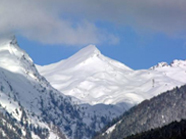
First, a player sets up an account for the game, which includes name, email, teacher’s name, and school district. If this is the first time playing the game, the player can choose an avatar from a small library. The choices will be male/female and then hair color and one or two outfit options. The person will also be able to name the avatar and have a username and password to enter into the game environment.
To play the game, the player will then choose what “Adventure” the player wants. Adventures will be a list of “rooms” or instances of play that are occurring. The player can see if an “Adventure” has any other players or if they are the only one. The idea behind having multiple “Adventures” is that the number of players is limited in each Adventure. You could also think of the “Adventures” as chat rooms.
Opening
The game opens on a snowy, windswept side of a mountain. A team of researchers has been exploring the Alaskan wilderness looking for samples when their radio informs them of an upcoming snow storm. When they first started gathering samples, the team thought they would just be out for an afternoon with plenty of time to get back to base camp by nightfall. However, an earthquake and resulting avalanche has cut-off their path back to base camp and it will take three days to clear the path.
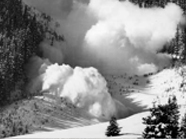
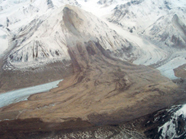
This huge landslide from an unnamed 7,000-foot-high peak in the Alaska Range, less than 10 miles west of the Trans-Alaska Oil Pipeline, was triggered by the 2002 Denali Fault earthquake. The fault rupture offset the ice of the mile-wide Black Rapids Glacier, in the foreground, which the landslide subsequently covered.
The introductory video/animation will show this; and show the effects of the earthquake.
The team members decide they need to build a shelter to keep them warm enough for the night since the temperature is dropping rapidly. They will use the shelter as their temporary camp location and go out on expeditions from the shelter to gather supplies or other materials they may need to survive. Other impediments (high winds and snow) will present other challenges necessitating continual (over the three-day period) improvements to the shelter. The team will stay in their shelter for three days and will be able to return to their base camp only after the snow has been cleared from their path.
Navigation
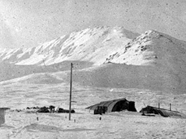
The avatars can run or walk, if they choose to run, it will use more health because of fatigue, which will be greater if they decide to run. We also need to decide what it looks like when they open their map and what materials should be in the knapsack and what is shown when it is clicked.
Each player will have a “dashboard” illustrating a number of items. An energy/fatigue meter, inventory, (stuff they pick up and carry, looks like a backpack), computer, and a phone. There will also be a map icon which, when clicked will show the location of the team and the location of their temporary camp so they know where to return when they venture out from the camp.
The view of the game will be “over the shoulder” or third person (you will see your character). It might be good to have the option of first person view as well.
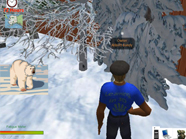
Each player has a limited amount of “energy” that increases or decreases based on score that is a combination of “warmth” (how warm the avatar is) and “Fatigue” (how much energy the avatar has exerted). The colder an avatar, the faster the avatar becomes fatigued. Players will also have an amount of “engineering” knowledge that increases as they solve problems or input information into the game. There will also be a clock telling you how much time they have before the first snowstorm arrives.
Object of Game
The object of the game is to survive for three days and then return to the base camp. To accomplish this goal, the team must create a shelter and then modify the shelter two times to withstand three different conditions.
- First Night: Cold weather
- Second Night: Cold weather and wind forces
- Third Night: Cold weather, wind forces, and snow load.
They must venture out from their temporary camp location to find supplies they need to survive. When venturing outside of camp, the team will encounter challenges they must overcome to survive.
- Create a fire
- Use a limited number of tranquilizer darts (or throw snowballs) to ward off, wolves, polar bears, and moose.
- Determine what materials are best for building a shelter
- Gather materials to build a shelter and then create a temporary shelter on the mountain
- Launch a grappling hook across a ravine to cross it in order to gather supplies needed for the shelter (incorporates rate/velocity trajectory). (I’m not sure that this is a good context to teach about rate/velocity – trajectory, yes, but that may not be all that important in the middle school math or science standards). They could also build a bridge, and since we already have some pretty good bridge KSB, that might be easier. They could build a simple beam bridge and model the load carrying characteristics. It would have to support one or two team members and the weight of the supplies. The downside is that bridge building is pretty much overdone. Maybe a rope bridge?
Game Play
Note: as the players create their shelter and look for supplies, they will be able to call an engineer at the base camp to get information or to check assumptions, check their computer to conduct “what-if” scenarios for the best shelter construction, and collect inventory items to use to build the shelter (items can be natural items, trees or wood, as well as human-made items found within a certain radius of their temporary camp).
The first activity the team will need to do is create a fire since the team members' “health” will be low due to cold and they have been out on the mountain since the morning.
Team members will need to gather firewood, and then two or more will need to stand in the direction of the wind to prevent it from putting out the fire. One member will have matches and will light the fire. After a few seconds of a roaring fire, members will need to put wood on it three times, so the team will be warm.
The next step is to begin building a shelter to protect them from the cold evening that is anticipated. Players can move out from the camp to pick up materials for the shelter. Many different materials will be scattered both human-made and naturally occurring. Players will need to choose which are best for the initial shelter (later they may come back for other materials to reinforce or alter their shelter because of changing weather conditions.) Each player can only carry a defined number of items (by weight), too much weight and they become fatigued too quickly. Building the first shelter can involve a “heat flow” KSB.
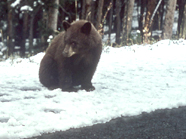
At random times (need some type of random generator for this), they will encounter a black bear, moose, or wolf and they will need to choose from a case of darts, the right one to tranquillize the animal (maybe they also throw snowballs – many of them – seems like it would be fun to do, like a shooting game). If they don’t they will perish. The players will need to plot the size of the dart, distance of the animal and trajectory of the shot to provide just the right dose. If the right dose is not used, the animal may die, or they may not have a large enough dart left to defend themselves against a polar bear attack. This can be a graphing KSB.
Note: Black bears spend the winter months in a state of hibernation. Their body temperatures drop, their metabolic rate is reduced, and they sleep for long periods. Bears enter this dormancy period in the fall, after most food items become hard to find. They emerge in the spring when food is again available. Occasionally, in the more southern ranges, bears will emerge from their dens during winter. In the northern part of their range, bears may be dormant for as long as seven to eight months.
Bears are extremely powerful animals and potentially dangerous to humans. They are usually highly cautious and secretive, but if they have a food supply, they may defend it against all intruders. Every year, bears are found in Alaska's biggest cities — in downtown Juneau, Anchorage, and Fairbanks. Encounters with humans, especially near garbage dumps and fish drying racks, frequently occur. Sows with cubs must always be respected. A rule of thumb is never to come between or near a mother bear and her young.
During the creation of the shelter for the first day (and throughout the game), the players can use a laptop computer they have (with limited battery life) to determine information or calculations using “What-If” scenarios. Also, they can use the computer icon to activate the computer (this opens to a 3D simulation.) The in-game "computer" (with limited battery life) can be used to figure things out in a "simulation” to learn formulas or information and then apply it to the in-game situation. They can simulate a simple shelter and then decide what materials they need (wood, metal, canvas, etc. ... it was a supply plane so lots of stuff is available). The model on the computer will give them “hints” and ideas of what types of materials are best to gather.
Once the team survives the first night, they learn of increasing winds that will precede the storm. So they will need to gather materials to reinforce the shelter for themselves for the second night. To build the shelter properly, they will need to perform calculations (which will be KSB). They need to gather additional materials for the reinforced shelter. This can be the second shelter KSB for determining wind load on a shelter.
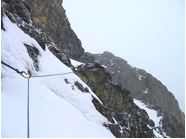
After they build the second shelter and daylight arrives, they learn that the storm will hit the next night and they need to reinforce it again. This time some key materials they need are across a ravine. They must shoot a rope across the ravine from one side to another. They need to figure out how much weight the rope can hold and, perhaps figure out an angle to aim the rope so they could slide from one side to another. This may be better than the bridge idea. They shoot a rope across and somehow hang on to it as they cross to get materials. Could they build a zip line? It works well downward, what about getting back up? Maybe they change the elevation of the line once they get across the ravine. This can be a trajectory KSB. Maybe one with weight.
The final part of the game is the creation of the third shelter that handles cold, wind forces, and snow load. This would be a culmination of previous KSB learned throughout the game.
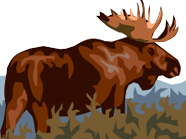
A random animal will again appear, which needs to be shot with the tranquilizer gun using the correct dart. (Recall of information from previous KSB.)
Competition:
Teams will compete with one another based on time and "amount of energy" expended (we need to figure some kind of formula for that).
Knowledge and Skill Builders (KSB)
Some possible KSB might include: properties of materials; heat transfer and insulation; human body heat generation; volume/surface area relationships for various geometric shapes of their shelter; energy content of biomass (wood), graphing, and heat flow.
Perhaps students should build a “test” shelter, smaller than in the mountains, and use some skills for trajectory of rope for rappelling, maybe do calculations to determine how big the fire should be and how to start the avalanche so they can avoid accidentally starting one.
Technological Considerations
Perhaps we would open the KBE simulations in an internet window. The learner clicks on the “computer” button on their screen and it spans another window within the screen that looks like a computer screen and the learners can work within that screen. The idea would be that the team would open their virtual “computer” which would be a KBE simulation and then they would run an experiment or “what-if” scenario. Then the learners would get some information and then manually enter that information into the game at appropriate points.
Survival Master Curriculum
Sample Playable Game
Research Design and Evaluation
Drs. Deborah Hecht (co-PL) and Bert Flugman at CASE will undertake research and evaluation activities for SMTE. They will attend all meetings and workshops, building on years of collaboration with the co-PLs on NSF projects. CASE was integrally involved in the proposal’s development, helping to ensure logical linkages between activities and expected outcomes. The team will use varied methods for assessing Project and student outcomes, including assessments of student content knowledge, tracking of screen activity, expert reviews, teacher and student feedback, self-efficacy and attitudinal surveys, observations, interviews, and focus groups.
Formative Evaluation. A logic model, in which inputs, processes, outputs, and outcomes are mapped, will guide optimization of Project activities, outcomes, and products. The evaluation team will document and evaluate procedures used to create the storyboards, 3D simulations, KSB, and design tasks; and ensure they are aligned with pedagogical goals. To assess whether materials effectively promote learning, link to STL, and provide adequate teacher and student support, developers will be surveyed and interviewed. All materials will be examined by teachers, students, and relevant experts for utility, clarity, and relevance for middle school education. As simulations and design tasks are developed, development team teachers and their students will micro-test and pilot them to improve their efficacy and appeal. Findings from focus groups held throughout the Project will further examine specific questions that arise.
Research and Summative Evaluation. The research program, field testing, and the summative evaluation are isomorphic and student assessment data will be collected for three research conditions: 1) the experimental (hybrid) condition, where students participate in the game, simulation, and physical modeling task; 2) the gaming and simulation only condition that involves students in the virtual tasks only; 3) the business as usual condition that will involve students only in the physical modeling task (enriched by KSB, so that students acquire content knowledge).
Research will investigate the adaptability of the Project hybrid model; explore whether opportunities to explore design under low-risk conditions of simulation and gaming lead to concentration, enjoyment, persistence, and goal focus (as predicted by PCT and flow theory); and assess if these opportunities increase self-efficacy (self-confidence) and lead to enhanced achievement.
Research questions will focus on operational design; on exploration of relevant theoretical questions connecting gaming/simulation to motivational theories related to self-efficacy; and on adaptability as follows: 1) Does the Project hybrid model lead to greater enhancement of content knowledge, design products, and self-efficacy/attitudes related to technology and group work than use of the business as usual or simulation only models? 2) Is there differential impact on learning across the three conditions related to student background characteristics (e.g., gender, disability, prior academic achievement, and prior exposure to computer gaming/simulation)? 3) Does the gaming and simulation condition satisfy flow theory and perceptual control theory criteria concerning concentration and enjoyment? 4) If so, how are student task engagement, concentration, enjoyment, and perceived goal-driven outcomes (key characteristics of flow theory and perceptual control theory) related to student learning in the gaming and simulation tasks? 5) What are the linear and nonlinear relationships between student self-efficacy and engagement during the simulation experience? 6) Can teachers adapt the prototypical materials to other curriculum areas and contexts using the instructor design interface and maintain student engagement and learning?
The experimental condition testing will involve 12 teachers with an average of 20 students each (n = 240 students). The other two conditions will have four teachers each, a sample size large enough to detect significant differences. Attempts will be made to randomly assign students to conditions. When random assignment is not possible, the groups will be statistically equated. For each research condition, data will be collected in six assessment domains: student variables (gender, age, prior academic achievement, prior experiences with gaming and simulation); teacher/school context variables (hardware availability, teacher experience with and attitudes about simulations and serious gaming); content knowledge (pre/post assessments of KSB knowledge assessed through multiple choice questions, and those requiring explanations as per Linn et al. [30]); embedded assessments (design products, projects, and design reports); affective assessments (pre/post self-efficacy and attitudinal ratings about the technological tasks, using the computer as a learning tool, doing KSB online, and working in teams); process measures of engagement/attention (participation time and levels within the virtual and physical design tasks as measured by logging software and wikis to track individual student work, teacher and student ratings, degree of collaboration, and conflict resolution).
Data will be analyzed using a variety of multivariate statistical analysis. The research and summative evaluation will identify not only how effective the three conditions are in promoting student learning and affective changes but also for which students and under what conditions they produce the strongest outcomes. These results will inform the new curriculum and contribute new knowledge related to the use of computer simulation and gaming as educational tools.
Automatic Logging. The Project will use automatic computer-based tracking technology developed by the Concord Consortium. The technology can track students’ solution paths, log software use, and yield valuable data on utilization and dissemination. This is an important innovation for program assessment as it addresses the difficult problem of tracking time on task and level of engagement. The logs will be far more accurate and credible than self-reports.
Dissemination Plan
NCTT will provide the tools and expertise required for Project dissemination. Co-PL Gordon Snyder, NCTT director, will work with ATE Center directors to publicize initiatives and products in school districts affiliated with the Centers. There are 39 such NSF-funded ATE Centers in the U.S.. NCTT will ensure that new and emerging technologies including podcasting, blogs, wikis, and vodcasting (video podcasting) are used. NCTT will also implement a web-based work space that will serve as a nexus for technology educators to use during and beyond the life of the Project. Presentations will be made at national conferences including NSF DR-K12 PL Conferences, the ITEEA national conference, and the Game Developers Conference. Research results will be published in professional journals.
Plan for Classroom Testing and Validating Materials
A field test of all materials was conducted during Project Year IV with 12 formal field test teachers from 10 states, seven “informal” field test teachers that included teachers from abroad as well as from within the U.S. A four-day professional development workshop was conducted during the period between August 9-12, 2011 to prepare the 12 Field Test teachers. The workshop was held in a technology education lab in one of the pilot-test schools (Southwoods Middle School, in Syosset, NY). The lab included 20 computers on which game files were installed, and a fully equipped facility with tools and machines that was used for physical modeling of the shelter. Prior to the field test training workshop, a face-to-face meeting was conducted by PL Hacker with three expert middle school technology teacher-consultants (Nick Cimorelli, East Rockaway, NY, schools, Kevin Oswald, Syosset, NY, schools, and Jim Wandzilak, Freeport, NY, schools) who had been working with the Project as advisors and pilot test teachers since Year I.
Training for the field test teachers was conducted by these three teachers and also by the Project leaders (PL Hacker, Co-PL Kapp, Game Producer Kiggens, Engineering Consultant Tom Robertson); and the Project research team (Drs. Deborah Hecht and Laura Saxman). The 12 field test teachers were paid honoraria by the Project to participate in the field test training and in the actual field test that was conducted during the January, 2012 semester; their travel and lodging expenses related to the field test training workshop in Long Island were reimbursed and all field test supplies were paid for by the Project.
In addition to the face-to-face training that occurred during the summer of 2011, a series of webinars was provided as ongoing support to the field test teachers. During the following year (Project Year V), a second field test was also implemented with 10 teachers from seven states (providing additional data to those collected during the initial training. Teachers and their students were divided into two groups: Group I completed the physical modeling activities (KSB and the physical modeling design challenge) and subsequently engaged in the virtual “team-based design activity.” Group II completed the virtual modeling activities (KSB and the virtual “team-based design challenge”).

SMTE is funded by the National Science Foundation (Grant # 0821965)

